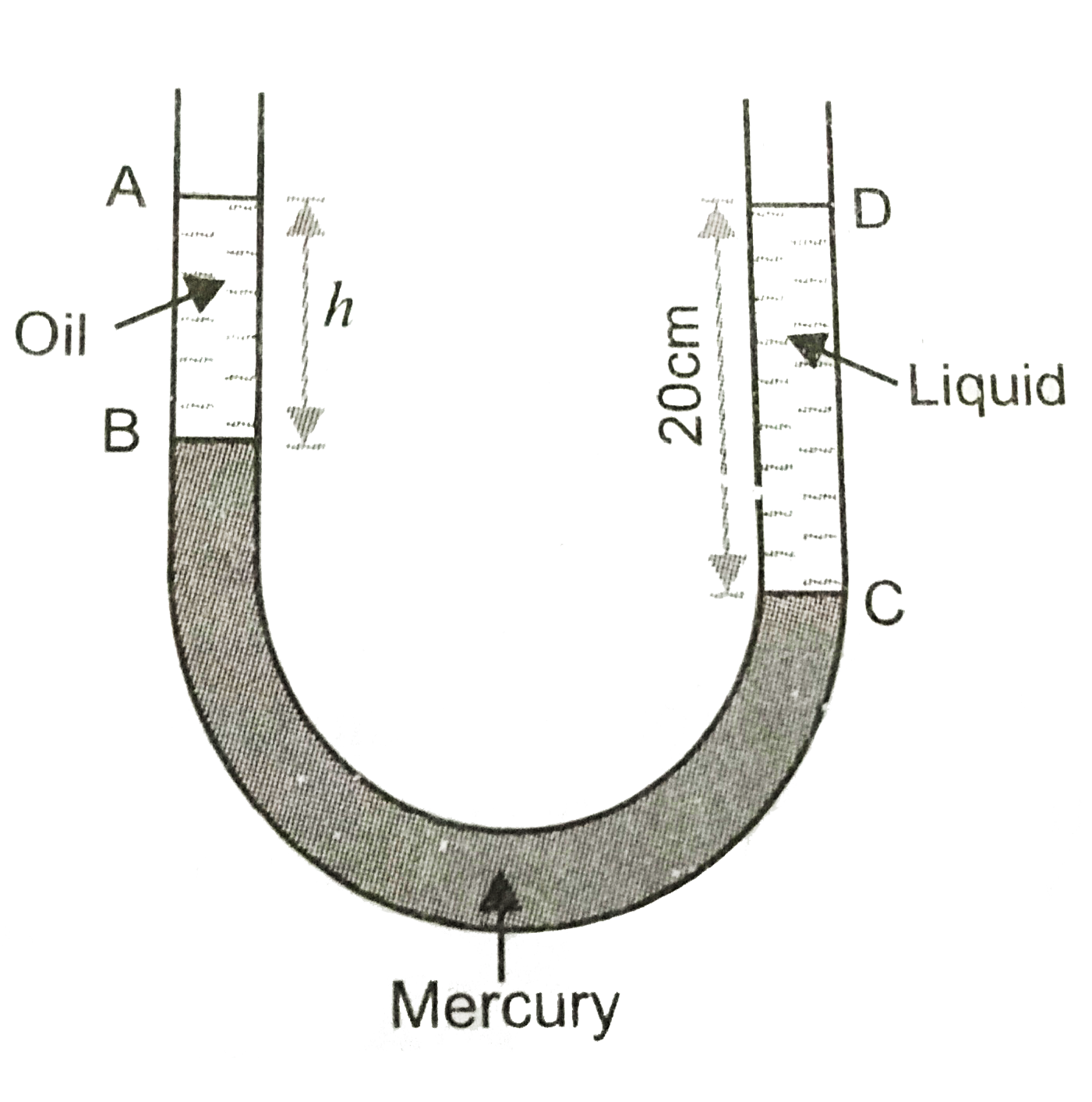Consider the situation shown in diagram. Determine h
ρω=1g/cc.ρm=13.6g/cc
ρc=1.6g/cc.
 .
.
For equilibrium, the pressure of liquid at the same level must be equal. Considering pressure at level B
ρωgh+ρmg(30−h)=ρcg.30
ρωh+ρm(30−h)=ρ0.30
1×h+13.6(30−h)=1.6×30
h=28.6cm.
Topper's Solved these Questions
Similar Questions
Determine height h of oil in the U tube as shown in fig. Density of oil =0.9g/cc, Density of liquid is 1.6g/cc and density of mercury. =13.6g/c.

View SolutionDiamonds are formed from graphite under high pressure in coal mines. Calculate the equilibrium pressure (in atm) at which graphite is converted to diamonds at 25∘C (assumed constant) given densities of ρgraphite=2g/cc&ρdiamond=3g/cc(ΔG∘f) for diamonds is 3 k J m−1 from graphite
View Solution
Knowledge Check
A cubical block of copper of side 10cm is floating in a vessel containing mercury. Water is poured into the vessel so that the copper block just gets submerged. The height of water column is
(ρHg=13.6g/cc,ρCu=7.3g/cc,ρwater=1gm/cc)A1.25 cmB2.5cmC5cmD7.5cmWhat is the freezing point of a solution contains 10.0gof glucoseC6H12O6, in 100g of H2O ? Kf=1.86∘C/m
A−0.186∘CB+0.186∘CC−0.10∘CD−1.03∘CA vessel is filled with water and kerosence oil. The vessel has a small hole in the bottom. Neglecting viscosity if the thickness of water layer is h1 and kerosens layer is h2 then the velocity v of flow of water will be (density of water is ρ1b g/c c and that of kerosense is ρ2 g/c c
Av=√2g(h1−h2)Bv=√[2g(h1−h2ρ2ρ1))Cv=√2g(h1ρ1+hρ2)Dv=√2g(h1ρ1ρ2+h2)
How many electrons protons, and neutrons are there in 12g of .6C2 and in 14g of .6C14 ?.
View SolutionConsider a solid cylinder of height h, density ρs, cross-sectional area A is floating in a liquid of density ρl. The frequency of vertical oscillations was found to be gahbρci,ρds when depressed slightly and released. Then what is the value of a2bcd ?
View SolutionTwo cylinders of equal masses, one made of material A and the other of material B, are heated to 50∘ C and placed on two large blocks of ice at 0∘ C If both the cylinders have the same height, find the ratio (hA/hB) of their maximum depth of penetration in the ice. Assume that no heat is lost to the surroundings and change in gravitational potential energy is not considered SA=0.2calg−1(C∘),ρA=4gcm−3
SB=0.1calg−1(C∘),ρB=2gcm−3
View SolutionThree identical vessels are filled with equal masses of three different liquids A,B and C(ρA>ρB>ρC). The pressure at the base will be
View SolutionThree liquids of equal masses are taken in three identical cubical vessels A, B and C. Their densities are ρA,ρB and ρC respectively but ρA<ρB<ρC. The force exerted by the liquid on the base of the cubical vessel is
View Solution